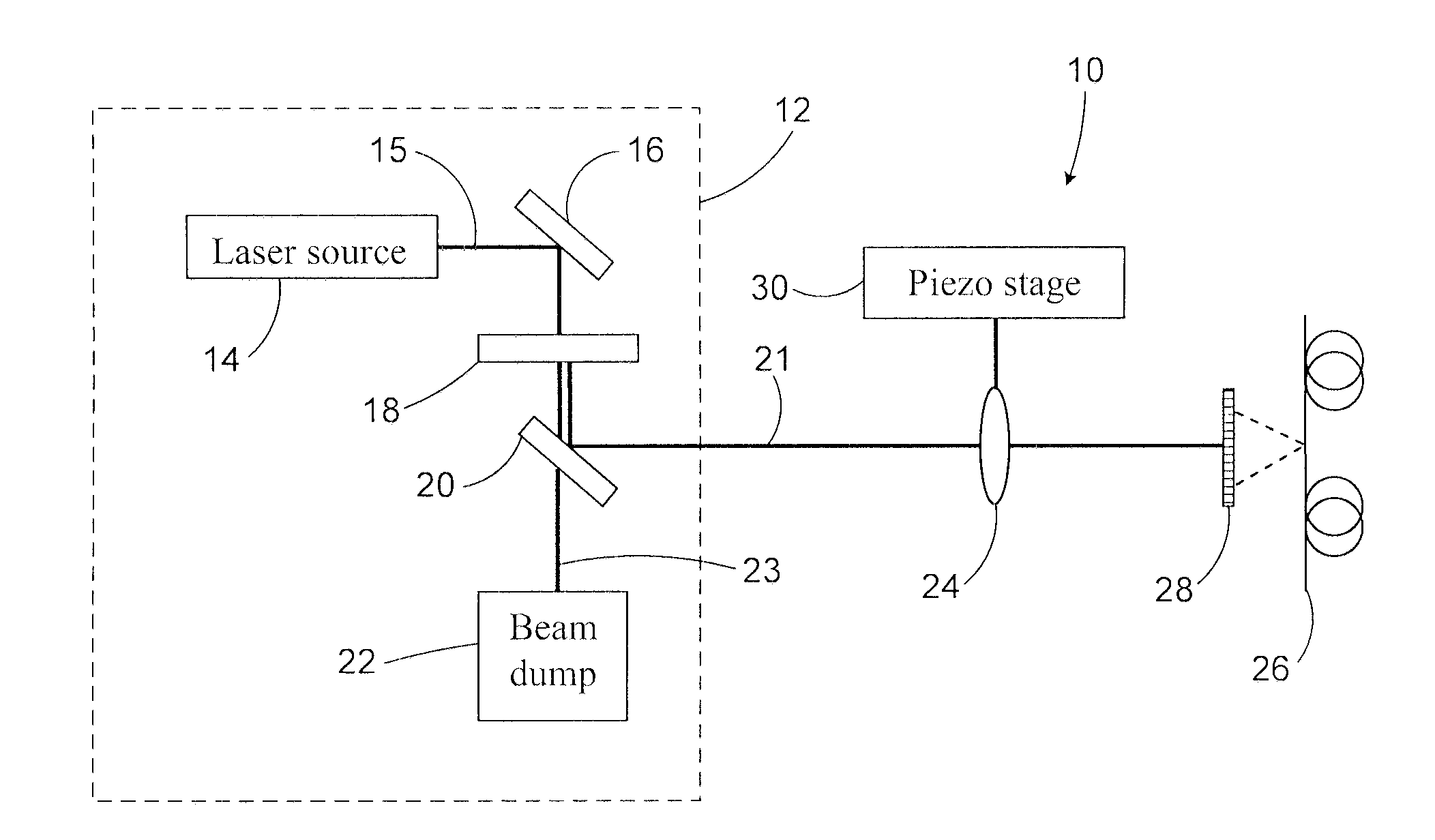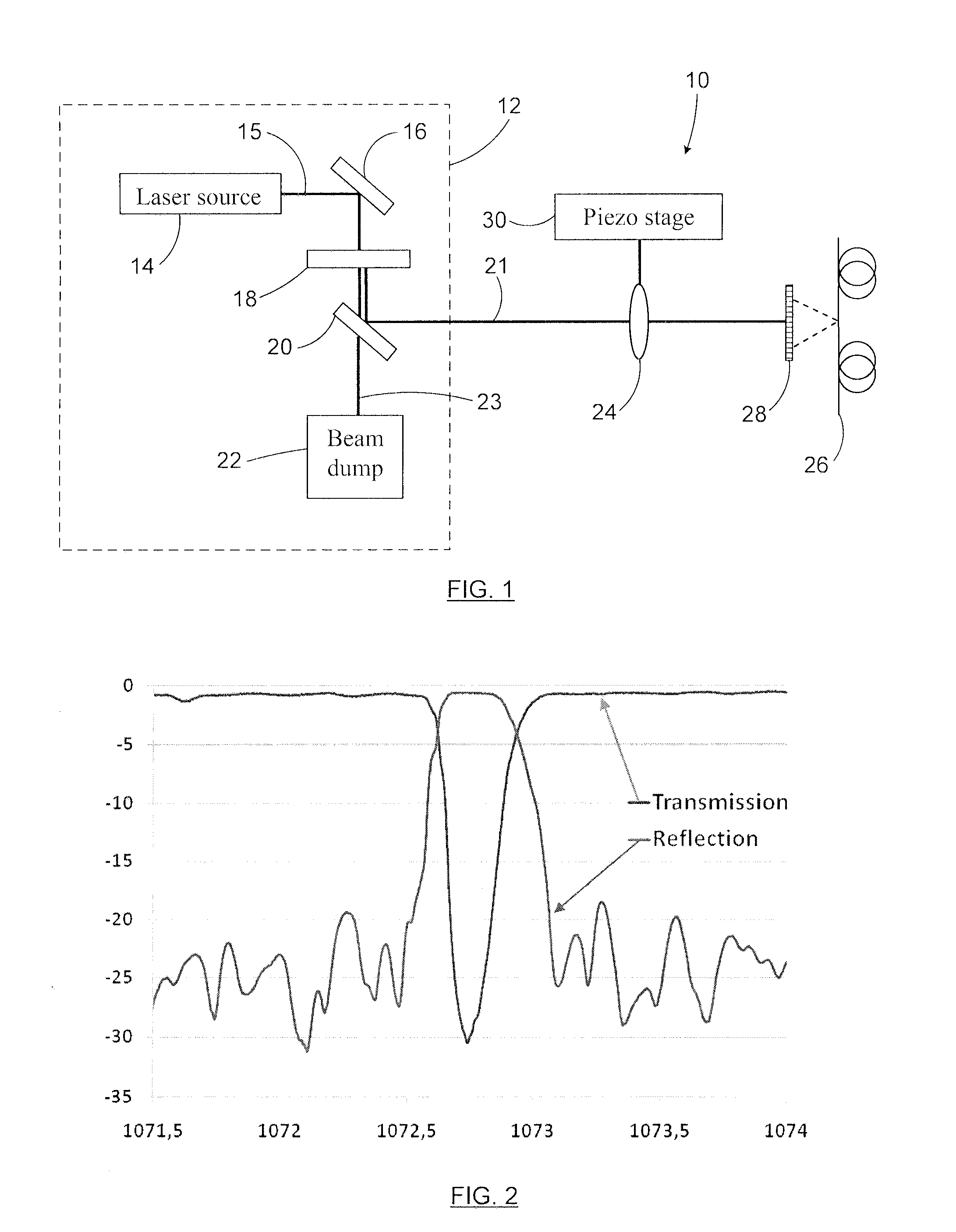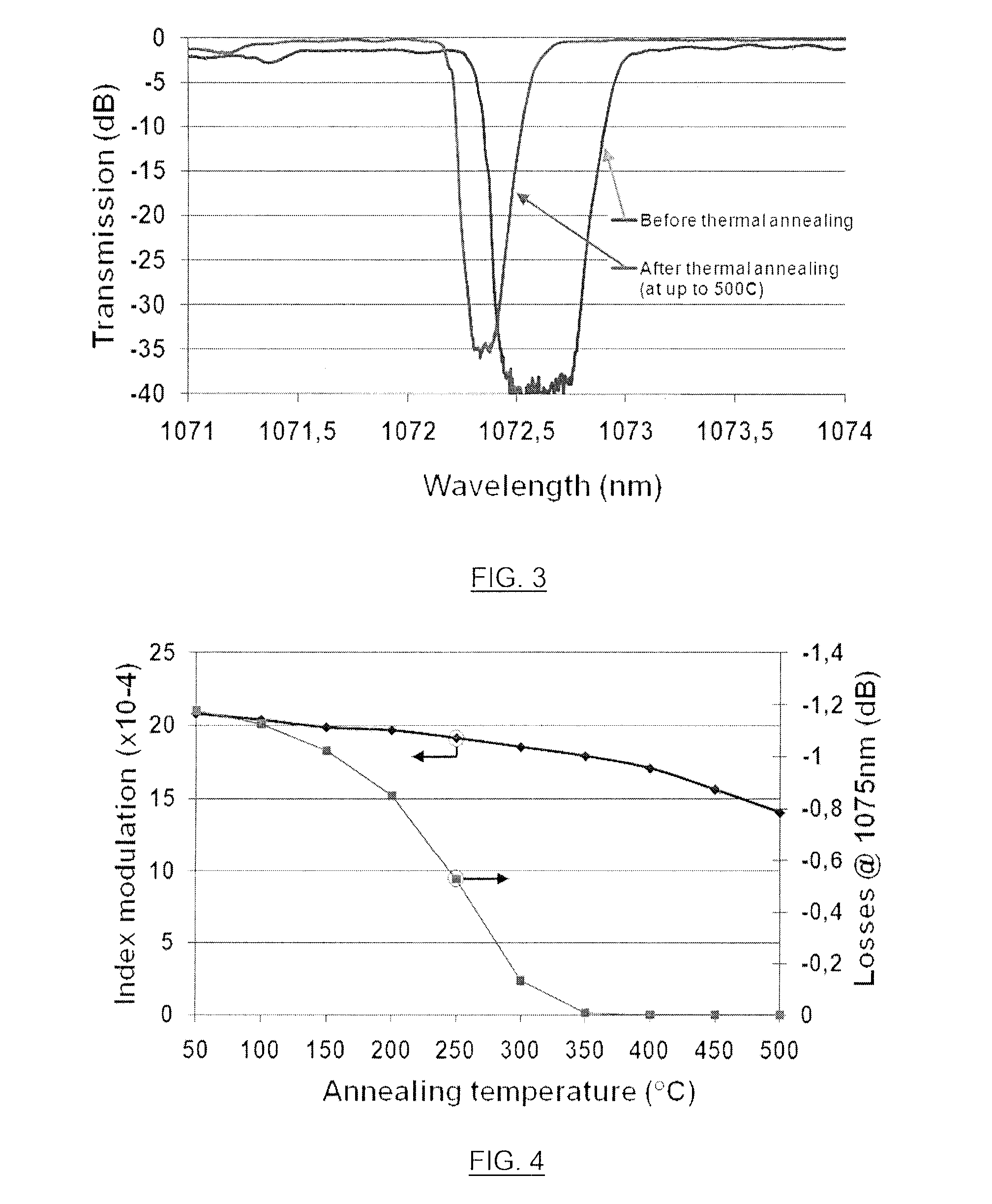Method For Writing High Power Resistant Bragg Gratings Using Short Wavelength Ultrafast Pulses
a technology of ultrafast pulses and bragg gratings, which is applied in the field of writing bragg gratings, can solve the problems of insufficient strength of high-order gratings at the wavelength of interest, and add intracavity losses, and achieve the effects of reducing the effect of photodarkening effects and altering the waveguide properties
- Summary
- Abstract
- Description
- Claims
- Application Information
AI Technical Summary
Benefits of technology
Problems solved by technology
Method used
Image
Examples
example
[0043]In one example of an embodiment of the invention, a Bragg grating was written in an optical fiber using a system similar to the one illustrated at FIG. 1. The waveguide used in this experiment was a double cladding ytterbium doped silica fiber. The pump core of the double cladding fiber had a diameter of 128 μm with an octogonal shaped geometry while the signal core had a 6 μm diameter and was co-doped solely with 2 mol % of Al2O3, hence no photosensitive element such as germanium was added to the fiber glass composition.
[0044]A Ti-sapphire regenerative amplifier system (Coherent Legend-HE, trademark) that produces fs-laser pulses of 3.5 mJ per pulse at 1 kHz repetition rate with central wavelength at λ=806 nm was used as pump source. The duration of the Fourier-transform limited pulses was measured to be about 35 fs. A BBO crystal (Eksma Optics, BBO-1502, trademark) was used to produce a maximum of 1.0 mJ of second harmonic at 403 nm. A dichroic mirror was used to separate th...
PUM
 Login to View More
Login to View More Abstract
Description
Claims
Application Information
 Login to View More
Login to View More - R&D
- Intellectual Property
- Life Sciences
- Materials
- Tech Scout
- Unparalleled Data Quality
- Higher Quality Content
- 60% Fewer Hallucinations
Browse by: Latest US Patents, China's latest patents, Technical Efficacy Thesaurus, Application Domain, Technology Topic, Popular Technical Reports.
© 2025 PatSnap. All rights reserved.Legal|Privacy policy|Modern Slavery Act Transparency Statement|Sitemap|About US| Contact US: help@patsnap.com



